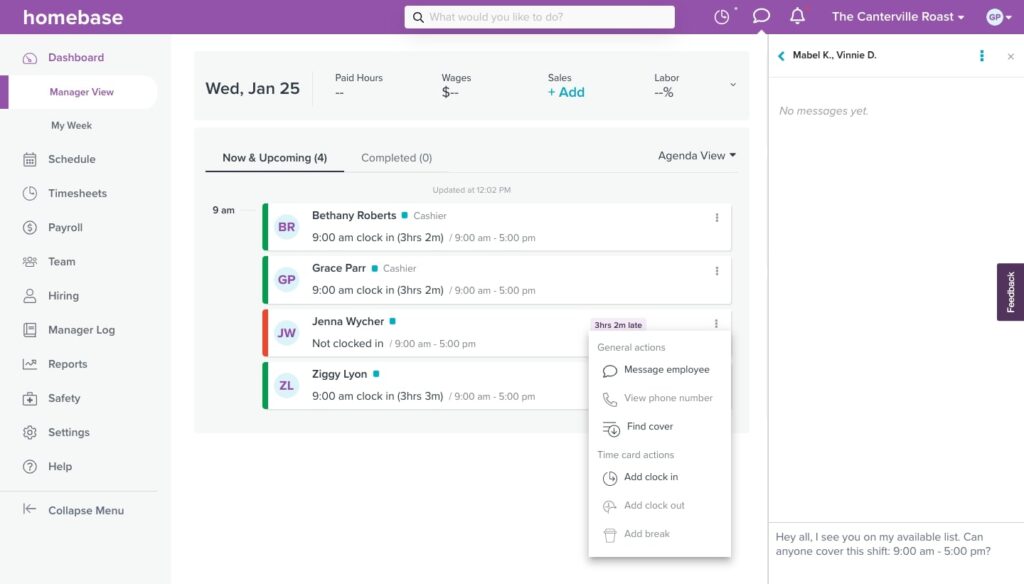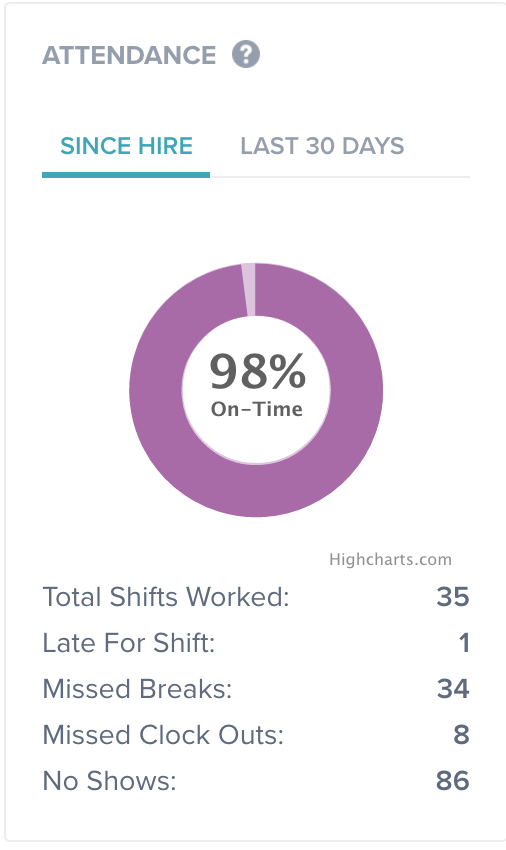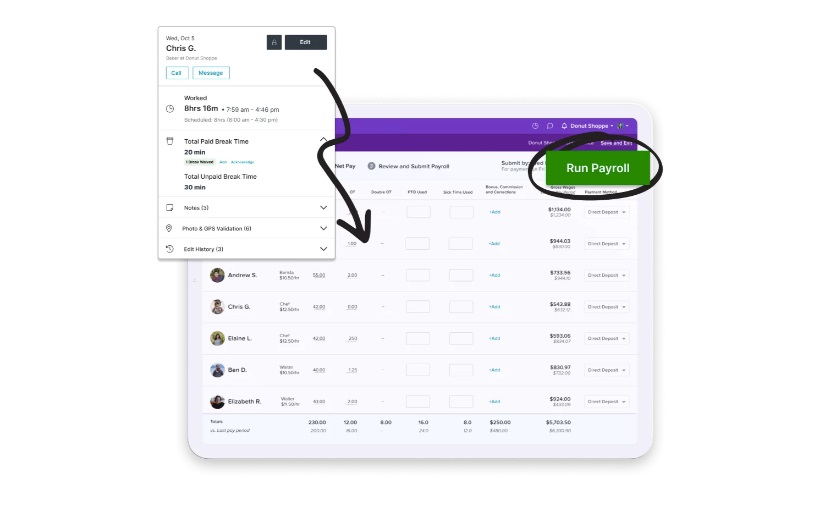Micromanagement is a common trap. It might look like effective control, but it actually hampers your business. It drains your team’s energy, frustrates your team, and can dip your revenue.
When your employees are empowered to make decisions for your business:
- You free yourself from the nitty-gritty details
- Increase effort and team investment
- Boost engagement throughout the workforce
Remember, high-performance teams bring diverse ideas, talents, and viewpoints, creating a powerhouse of innovation and efficiency. They need less oversight, meet goals effortlessly, and hold themselves accountable.
In this article, we’ll look at strategies to help you encourage a culture where excellence is the standard and underperformance is naturally addressed.
8 Steps to build an empowered, high-performing team
Empowerment in the workplace goes beyond just a feel-good factor. It’s linked to job satisfaction, employee retention, and commitment to the company. Here are some strategies to help you create a dynamic, self-reliant workforce that drives performance and growth.
1. Implement accountability practices
Teams lacking accountability often face high turnover rates, lack of trust, and inefficient project completion. Start by assigning clear responsibilities to each team member. This clarity ensures everyone knows their role and reduces confusion.
Set firm deadlines and expectations, and hold each person accountable for their outcomes. Regularly review progress, providing feedback and maintaining high standards.
Many business owners may find time clock apps and software helpful to streamline their timekeeping processes, while others prefer manual approaches for their simplicity. Manual systems like spreadsheets and pen and paper seem straightforward, but they can easily lead to errors, instances of buddy punching, and inaccurate paychecks.

Homebase’s employee scheduling tool reduces these kinds of scheduling challenges. The GPS-enabled time clock verifies each employee’s location, so there’s no risk of buddy punching. You can also set labor cost controls to prevent early clock-in and automatically clock staff out. Then you can avoid costly compliance issues with overtime and missed break alerts for the whole team.
2. Develop a problem-solving framework
Start by training your team to identify and analyze problems systematically. Encourage them to gather relevant information and brainstorm possible solutions. Then, evaluate these options based on feasibility and impact. Implement the chosen solution and monitor its effectiveness, making adjustments as necessary.
For example:
- Identify the problem: If customers frequently complain about delayed responses, that’s a clear problem area.
- Gather information: Track response times and survey customers about their expectations
- Brainstorm solutions: Possible options could include hiring additional staff, implementing automated response systems, or retraining current staff for efficiency.
- Evaluate options: Consider factors like cost, implementation time, and potential improvement in customer satisfaction.
- Implement and monitor: If you opt for an automated system, monitor its impact on response times and customer feedback.
3. Conduct strength assessments for each team member
Consider integrating a mix of self-reflection and group dynamics. Here are some questions to guide this process:
Individual self-reflection:
- How am I using my strengths on a regular basis?
- Are any strengths being overused, potentially creating a blind spot?
- Were there any strengths you were surprised to discover?
- Which strength would you like to focus on and use more in your work or life in the next few months? What changes would this entail?
Team dynamics and reflection:
- What do you notice about your strengths collectively? How do they complement each other?
- How do the roles in the team align with individual strengths?
- Are there any strengths missing across the team that need development or external support?
- Is there a blind spot created by over-relying on certain strengths?
For a more structured approach, consider using specific team assessment surveys that measure factors like reliability, support, clarity, and accountability. These surveys can provide a detailed understanding of how the team operates and where improvements can be made.
4. Provide parameters but allow creativity in execution
Provide clear goals and boundaries to your team, but encourage creativity within these limits. For example, if the task is to enhance client engagement, set specific targets.
Your decided target could be increasing engagement by 20%, but allow your team to creatively decide how to achieve this, whether through social media strategies, personalized customer interactions, or innovative marketing campaigns.
Regular check-ins can ensure alignment with goals, but these should focus on progress rather than controlling the methods. This approach encourages your team to explore and implement unique solutions that align with set objectives.
5. Celebrate employees who show initiative
Acknowledge and reward team members who take the lead on projects or come up with new ideas. This could be through recognition in company communications or tangible rewards like bonuses or gift cards.

Or if you’re using Homebase, take advantage of the employee happiness app to give ShoutOuts! Homebase also tracks performance metrics like on-time arrivals, offering another way to identify and celebrate top performers.
Plus, it keeps track of important employee milestones like birthdays and work anniversaries, making it easy to acknowledge and celebrate these special occasions within your team
6. Establish a culture of open feedback
Create a safe environment where constructive criticism is encouraged and valued. Regularly scheduled feedback sessions, where team members can openly discuss what’s working and what’s not, can be very effective.

Consider using Homebase’s team communication app to share important updates, accommodate people’s needs, and create shift schedules that respect their preferences and commitments.
Plus, employees can also trade shifts and coordinate covers among themselves with minimal involvement from you.
7. Incorporate technology and automation
Technology and automation streamline processes, reduce manual errors, and free up valuable time for your team to focus on more strategic tasks. It ensures consistency and efficiency in repetitive tasks, allowing for smoother business operations.

Homebase offers a comprehensive suite of features to leverage these benefits. Apart from being an employee scheduling and communication app, it:
- Simplifies payroll processes with automatic tax calculations and IRS payments, making financial management more efficient and less prone to errors.
- Offers GPS time clocks, built-in messaging, and real-time alerts to keep you connected with teams at various job sites.
- Helps in the hiring process with tools for finding, screening, and onboarding new employees.
- Creates custom employee handbooks, consolidating policies, procedures, and legal information into a single, accessible digital resource.
- Offers features to manage employee well-being, including health and safety tools like symptom screening for shifts.
8. Encourage continuous learning and improvement
Continuous learning leads to increased employee engagement, job satisfaction, knowledge retention, and overall performance. It helps in developing a workforce that is innovative, adaptive, and capable of meeting the changing demands of the business climate.
You can start by:
- Defining specific learning objectives for each team member aligned with their role and the organization’s objectives.
- Offering access to online courses, workshops, and seminars. Consider subscriptions to e-learning platforms or industry-specific publications.
- Hosting regular ‘Lunch and Learn’ sessions where team members can present new skills or knowledge they’ve acquired.
- Pairing less experienced employees with mentors for knowledge transfer and guidance.
- Dedicating a certain number of hours per week or month for employees to focus on learning and development activities.
Boost and track employee work performance with Homebase
An empowered team is a cohesive unit that drives innovation, efficiency, and growth. You need to give your employees the resources, responsibility, and authority they need to stay engaged.
And with dedicated software like Homebase, you can start sharing accountability with online scheduling and time-tracking tools. We also offer HR and compliance features and hiring and onboarding capabilities so you can communicate your policies easily to every new team member.
Our easy-to-use tools can change how you manage your team and make them more connected, collaborative, and productive, positioning you to plan for a thriving, stress-free future.
